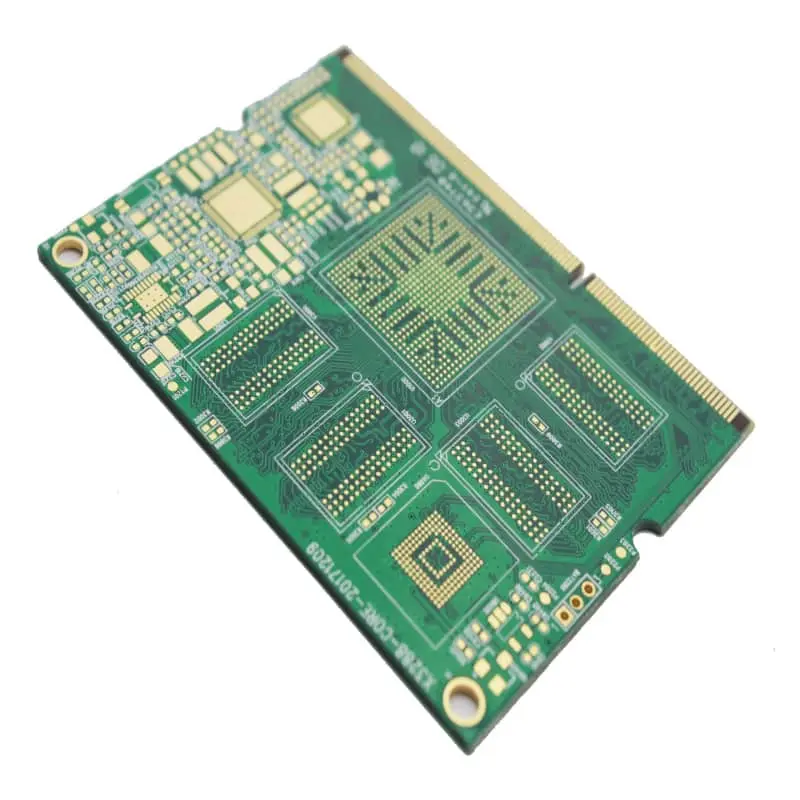The FR4 substrate is a widely used material in the electronics industry, known for its excellent mechanical, thermal, and electrical properties. In this article, we will explore the materials used in FR4 substrates, the manufacturing process, and important considerations to ensure quality.
Materials Used in FR4 Substrate
The FR4 substrate is composed of a woven fiberglass cloth impregnated with a flame-resistant epoxy resin. This combination provides a balance of strength and flexibility while maintaining non-conductivity, which is essential for electronic applications.
 Fiberglass Cloth: The fiberglass cloth used in FR4 substrates typically has a weave style that contributes to its mechanical strength. The most common weave styles include 1080, 2116, and 7628, with varying thread counts and thicknesses. For example, 7628 fiberglass cloth has a thickness of 0.18 mm and a thread count of 44 x 32 per inch.
Fiberglass Cloth: The fiberglass cloth used in FR4 substrates typically has a weave style that contributes to its mechanical strength. The most common weave styles include 1080, 2116, and 7628, with varying thread counts and thicknesses. For example, 7628 fiberglass cloth has a thickness of 0.18 mm and a thread count of 44 x 32 per inch.
Epoxy Resin: The epoxy resin in the FR4 substrate is formulated to be flame resistant, denoted by the “FR” in FR4. This resin not only provides adhesion to the fiberglass cloth but also contributes to the material’s thermal stability and electrical insulation properties.
Manufacturing Process of FR4 Substrate
The manufacturing process of FR4 substrates involves several critical steps, each contributing to the final quality of the product.
Step 1: Prepreg Preparation
Prepreg, short for pre-impregnated, refers to the fiberglass cloth that has been impregnated with epoxy resin. The fiberglass cloth is passed through a resin bath and then partially cured in an oven to create a tacky, semi-cured state. The prepreg thickness is typically controlled to achieve the desired properties in the final FR4 substrate.
Step 2: Layer Stacking
Multiple layers of prepreg and copper foil are stacked to form the FR4 substrate laminate. The number of layers depends on the required thickness and electrical performance specifications. For instance, a typical FR4 substrate might include layers such as:
– Bottom copper foil (1 oz/ft²)
– Prepreg layer (0.1 mm)
– Inner copper layer (1 oz/ft²)
– Prepreg layer (0.1 mm)
– Top copper foil (1 oz/ft²)
Step 3: Lamination
The stacked layers are subjected to high pressure and temperature in a laminating press. This process fully cures the epoxy resin, bonding the layers together to form a solid, homogeneous FR4 substrate. Typical lamination conditions include a pressure of 200-300 psi and a temperature of 170-190°C, with a curing time of 1-2 hours.
Considerations in Manufacturing FR4 Substrate
Ensuring the quality and performance of FR4 substrates requires attention to several key factors.
Material Selection
Choosing high-quality fiberglass cloth and epoxy resin is crucial for the reliability of FR4 substrates. The materials should meet industry standards such as IPC-4101 for base materials for printed circuit boards.
Process Control
Maintaining precise control over the prepreg preparation, layer stacking, and lamination processes ensures consistent product quality. Parameters such as resin content, prepreg thickness, and lamination conditions should be carefully monitored and controlled.
Quality Testing
After manufacturing, FR4 substrates are rigorously tested to ensure they meet performance specifications. Tests may include thermal conductivity, dielectric constant, and mechanical strength assessments.
Conclusion
The manufacturing of FR4 substrates is a complex process that combines advanced materials and precise engineering. By understanding the materials involved, the manufacturing steps, and the key considerations, manufacturers can produce high-quality FR4 substrates that meet the demands of modern electronics. From the selection of fiberglass cloth to the final lamination, each step plays a vital role in the performance and reliability of the FR4 substrate.















